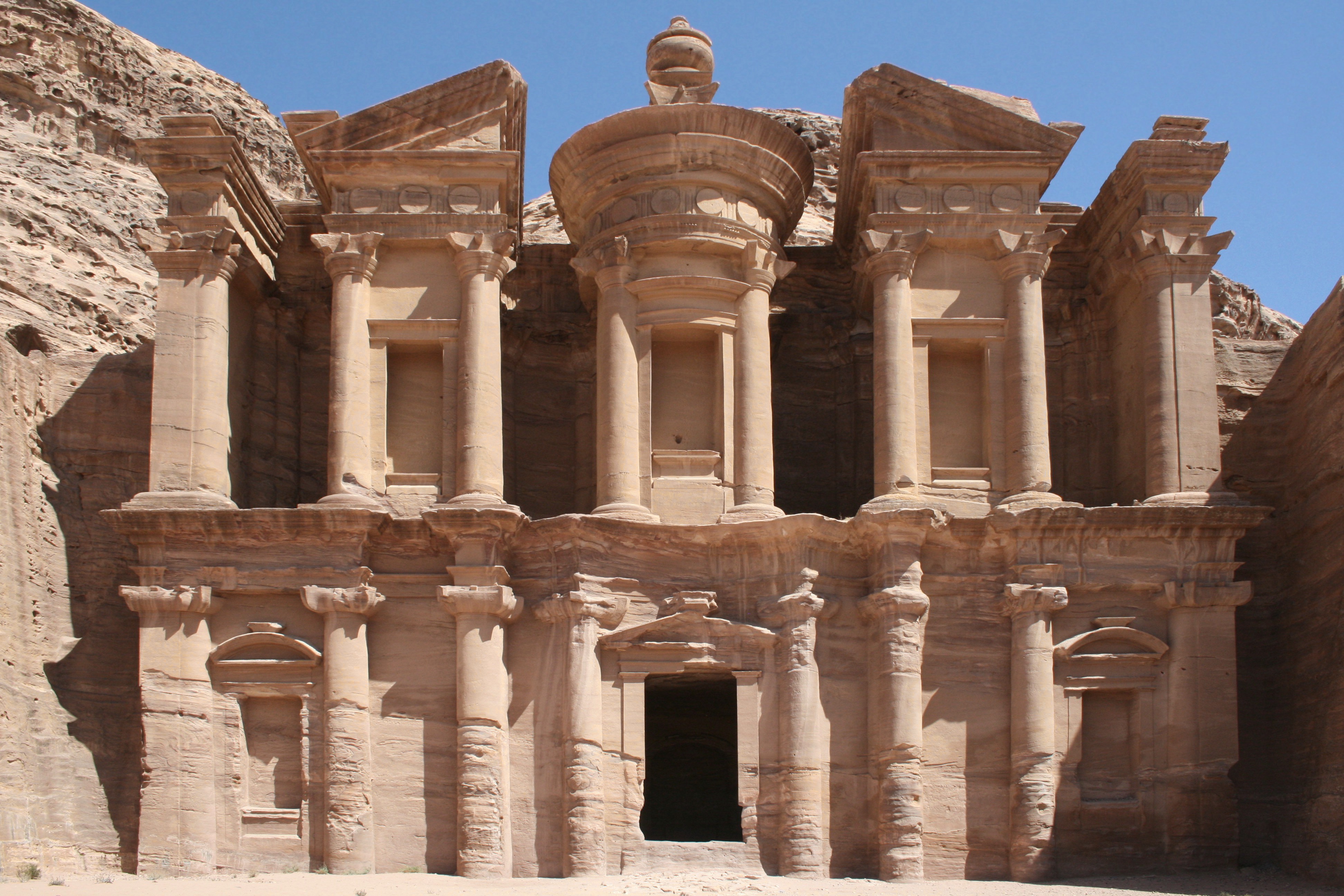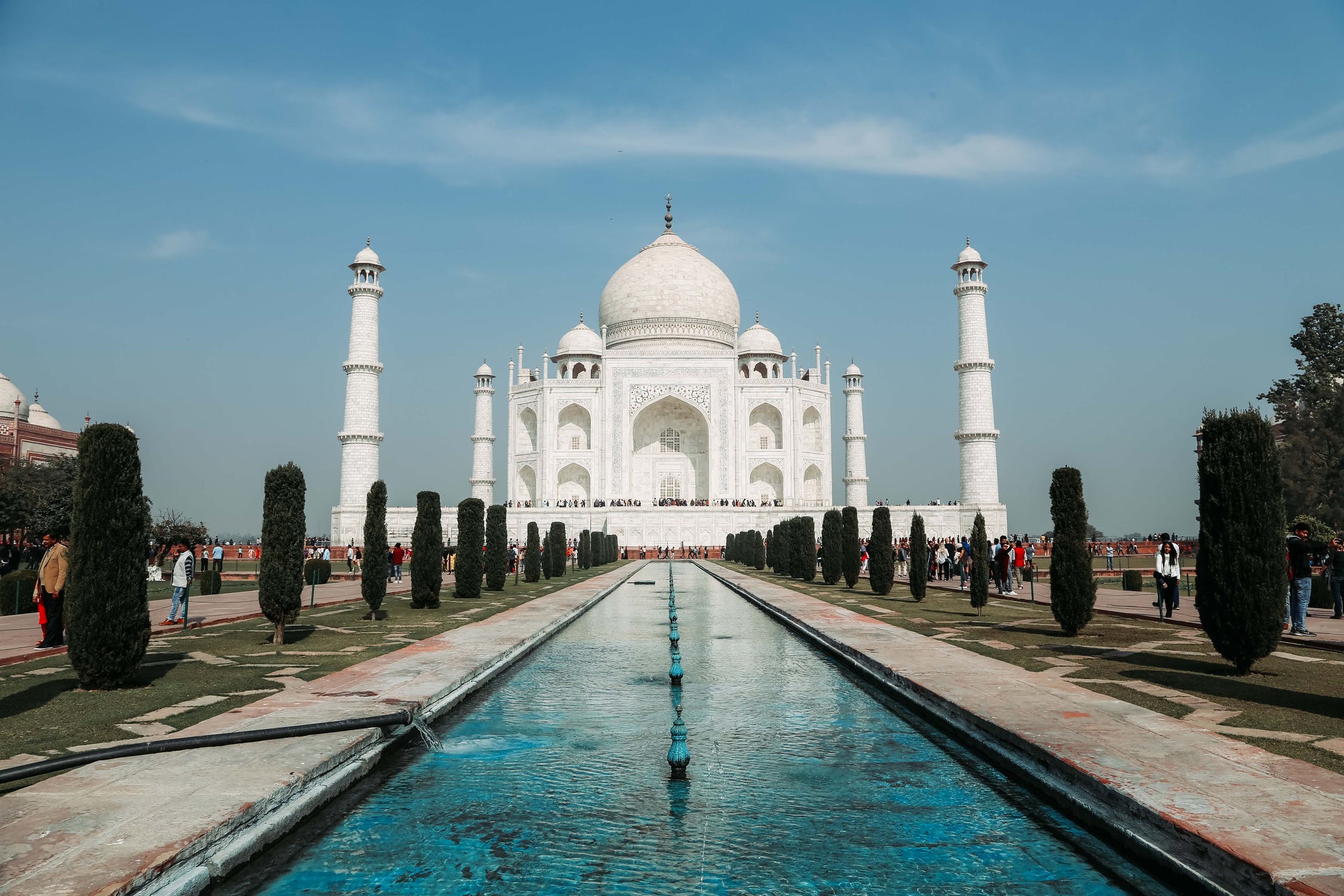Las 7 maravillas del mundo moderno / The 7 wonders of the modern world
Las 7 maravillas del mundo moderno
The 7 wonders of the modern world
The 7 wonders of the modern world
- Las siete maravillas que puedes visitar
- The seven wonders you can visit
En el cumpleaños número siete de NabbuBlog, traemos las 7
maravillas del mundo moderno. Estas nuevas maravillas fueron recopiladas a través
de una votación en 2007, por la empresa New Open World Corporation (Iberojet,
n.d.) y a diferencia de las 7 maravillas del mundo antiguo, de las que solo existe
una en la actualidad (Mundoviajes.org,
n.d.; Nocetti,
2021), estas obras se pueden visitar, ya que, son lugares turísticos abiertos
al mundo (El Mundo,
2007), a continuación, las siete maravillas del mundo moderno:
On NabbuBlog's seventh birthday, we bring the 7 wonders of the modern world. These new wonders were collected through a vote in 2007, by the company New Open World Corporation (Iberojet, n.d.) and unlike the 7 wonders of the ancient world, of which only one exists today (Mundoviajes.org, n.d.; Nocetti, 2021), these works can be visited, since, they are tourist places open to the world (El Mundo, 2007), then the seven wonders of the modern world:
1) El Coliseo de Roma (Italia)
Conocido en la antigüedad como anfiteatro Flavio, es patrimonio de la humanidad desde 1980. Ha sobrevivido desde la época del Imperio Romano, en la que se utilizaba para espectáculos como la lucha de gladiadores.
1) The Colosseum of Rome (Italy)
Known in ancient times as Flavian Amphitheater, it has been a World Heritage Site since 1980. It has survived since the time of the Roman Empire, when it was used for shows such as gladiator fighting.
Known in ancient times as Flavian Amphitheater, it has been a World Heritage Site since 1980. It has survived since the time of the Roman Empire, when it was used for shows such as gladiator fighting.
FeaturedPics, CC BY-SA 4.0 <https://creativecommons.org/licenses/by-sa/4.0>, via Wikimedia Commons
2) Machu Picchu (Perú)
Este complejo arquitectónico se encuentra a más de 2.500 metros de altura. Es una obra construida por el Imperio Inca y se cree que en la antigüedad era un santuario.
Este complejo arquitectónico se encuentra a más de 2.500 metros de altura. Es una obra construida por el Imperio Inca y se cree que en la antigüedad era un santuario.
2) Machu Picchu (Peru)
This architectural complex is located more than 2,500 meters high. It is a work built by the Inca Empire and it is believed that in ancient times it was a sanctuary.
This architectural complex is located more than 2,500 meters high. It is a work built by the Inca Empire and it is believed that in ancient times it was a sanctuary.
icelight from Boston, MA, US, CC BY 2.0 <https://creativecommons.org/licenses/by/2.0>, via Wikimedia Commons
3) Cristo Redentor (Brasil)
Esta estatua se encuentra a 710 metros de altura sobre el
nivel del mar. La escultura consta de 38 metros de altura y un pedestal de 8
metros.
3) Christ the Redeemer (Brazil)
This statue is located 710 meters above sea level. The sculpture consists of 38 meters high and a pedestal of 8 meters.
This statue is located 710 meters above sea level. The sculpture consists of 38 meters high and a pedestal of 8 meters.
Jorge Morales Piderit, Public domain, via Wikimedia Commons
4) Petra (Jordania)
Es una ciudad esculpida en las rocas. Fue fundada en el siglo
VIII A. C. y formó parte de la ruta de la seda. Fue declarada patrimonio de la
humanidad en 1985.
4) Petra (Jordan)
It is a city sculpted in the rocks. It was founded in the eighth century BC.C. and was part of the Silk Road. It was declared a World Heritage Site in 1985.
It is a city sculpted in the rocks. It was founded in the eighth century BC.C. and was part of the Silk Road. It was declared a World Heritage Site in 1985.
Diego Delso, CC BY-SA 3.0 <https://creativecommons.org/licenses/by-sa/3.0>, via Wikimedia Commons
5) Taj Majal (India)
Este mausoleo fue construido en honor a Mumtaz Mahal, la esposa del emperador Shah Jahan. El diseño de esta obra arquitectónica combina los estilos persa, musulmán e indio.
Este mausoleo fue construido en honor a Mumtaz Mahal, la esposa del emperador Shah Jahan. El diseño de esta obra arquitectónica combina los estilos persa, musulmán e indio.
5) Taj Majal (India)
This mausoleum was built in honor of Mumtaz Mahal, the wife of Emperor Shah Jahan. The design of this architectural work combines the Persian, Muslim and Indian styles.
This mausoleum was built in honor of Mumtaz Mahal, the wife of Emperor Shah Jahan. The design of this architectural work combines the Persian, Muslim and Indian styles.
6) La Gran Muralla (China)
Compuesta por diferentes tramos que recorren gran parte de
China, su altura oscila entre los 6 y 7 metros, mientras que su ancho oscila
entre los 4 y 5 metros.
6) The Great Wall (China)
Composed of different sections that cover much of China, its height ranges between 6 and 7 meters, while its width ranges between 4 and 5 meters.
Composed of different sections that cover much of China, its height ranges between 6 and 7 meters, while its width ranges between 4 and 5 meters.
Severin.stalder, CC BY-SA 3.0 <https://creativecommons.org/licenses/by-sa/3.0>, via Wikimedia Commons
7) Chichén Itzá (México)
Antigua ciudad maya, su apogeo fue alrededor de los años 600
D.C. y 1200 D.C. Uno de sus lugares más famosos es el templo de Kukulcán, que
tiene forma piramidal y consta con 91 escalones. Tiene un templo rectangular en
su cima.
7) Chichen Itza (Mexico)
Ancient Mayan city, its heyday was around 600 A.C. and 1200 A.C. One of its most famous places is the temple of Kukulcán, which has a pyramidal shape and consists of 91 steps. It has a rectangular temple at its top.
Ancient Mayan city, its heyday was around 600 A.C. and 1200 A.C. One of its most famous places is the temple of Kukulcán, which has a pyramidal shape and consists of 91 steps. It has a rectangular temple at its top.
Mariordo (Mario Roberto Durán Ortiz), CC BY-SA 4.0 <https://creativecommons.org/licenses/by-sa/4.0>, via Wikimedia Commons
Referencias / References:
Nocetti, F.A. (2021). Las 7 maravillas del mundo moderno . NabbuBlog. http://nabbublog.blogspot.com/2021/07/las-7-maravillas-del-mundo-moderno-7.html
How to cite this article:
Nocetti, F.A. (2021). The 7 wonders of the modern world. NabbuBlog. http://nabbublog.blogspot.com/2021/07/las-7-maravillas-del-mundo-moderno-7.html
El Mundo. (2007). Así son las siete nuevas maravillas. https://www.elmundo.es/elmundo/2007/07/08/cultura/1183853594.html
Iberojet. (n.d.). Ruta por las 7 maravillas del mundo. https://paquetes.iberojet.com/blog/ruta-por-las-7-maravillas-del-mundo
Mundoviajes.org (n.d.). Las 7 Maravillas del Mundo Moderno y
Antiguo. https://www.mundoviajes.org/7-maravillas-del-mundo/
Nocetti, F.A. (2021). Las 7 Maravillas del mundo antiguo. NabbuBlog. http://nabbublog.blogspot.com/2021/07/las-7-maravillas-del-mundo-antiguo-7.html
Cómo citar este artículo:
Nocetti, F.A. (2021). Las 7 maravillas del mundo moderno . NabbuBlog. http://nabbublog.blogspot.com/2021/07/las-7-maravillas-del-mundo-moderno-7.html
How to cite this article:
Nocetti, F.A. (2021). The 7 wonders of the modern world. NabbuBlog. http://nabbublog.blogspot.com/2021/07/las-7-maravillas-del-mundo-moderno-7.html







